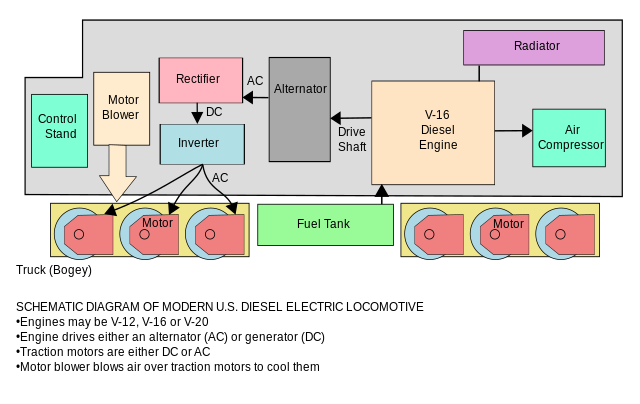How Do Diesel Locomotives Work

How Diesel Locomotives Work. A “Diesel Locomotive” is a self-powered railway vehicle that moves along the rails and pulls or pushes a train attached to it using a huge internal combustion engine running on Diesel fuel as the prime mover or the primary supplier of power.
. Three Phase Induction Motors are robust & require little maintenance. Due to absence of commutator, its peripheral speed puts no limit on speed of motor. AC traction motors can easily operate at 4000 RPM in contrast to DC motors which normally operate at speeds of 2400 RPM.
The limit imposed due to bar to bar voltage for DC commutator is eliminated in induction motors. This means that the whole power flow from Transformer to the motor is chosen at higher operating voltages. Against nominal system of 750 volts, 1000 ampere with DC motor, the three phase motor works at around 2800 volts, 300 ampere. With heavy reduction in operating current, power cables & switch gears are much lighter there by losses are reduced.
How Do Modern Diesel Locomotives Work
Power to weight ratio of three phase traction motor is much higher than the DC motor -1500 kW per axle can be packed with these motors. Working Of Three-Phase Locomotive.